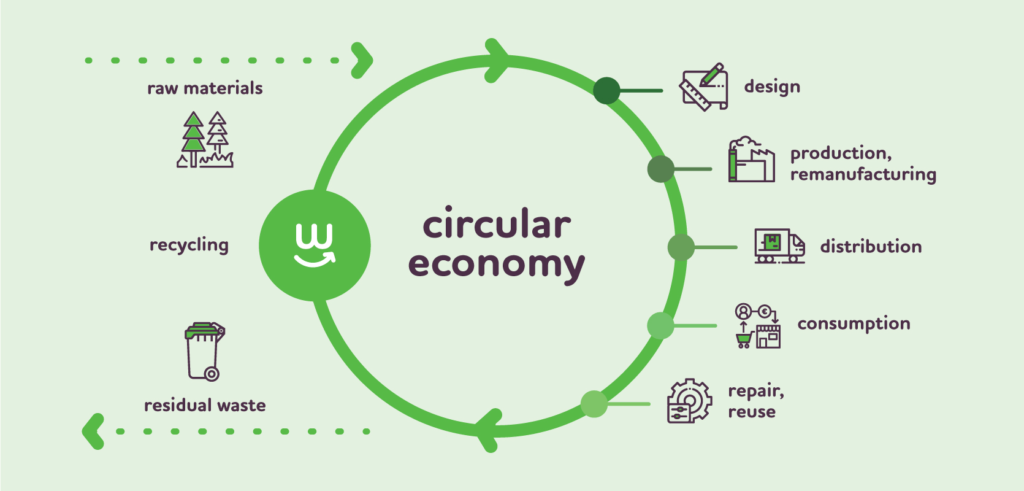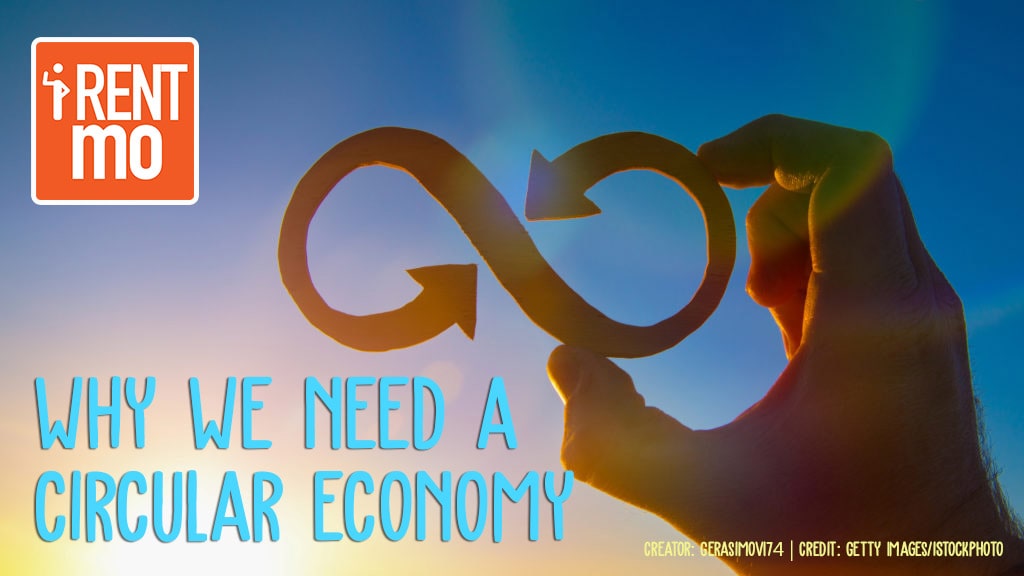Why We Need A Circular Economy
Because of industrialization, we have a lot of the new technology that we have today. Technology has made our lives much easier. However, one huge negative effect of it is mass production. Because of the growing population, there is more demand for more things. With this, companies are mass-producing their products in big quantities at a faster rate to meet consumer demands. This results in a huge production of things that end up not being bought and hence, end up in landfills.
Moreover, mass production also has its negative impact on the environment. One negative effect of mass production is pollution. Factories are the number one pollutants in the world. They are highly dependent on coal to power big machines as well as steam engines that are used to transport goods from one place to another. When coal is burned, it is released into the air as toxic chemicals that end up polluting not only the air but also bodies of water and land. In addition to pollution, another negative effect of mass production is big energy consumption. Powerful machineries used in factories require a huge amount of energy.
Because of these ongoing environmental problems caused by industrialization, the environmental movement has been on the rise especially more and more now in these past few years. More and more people are starting to advocate to a circular economy and switch out some of their single-use items for more sustainable ones. More companies are even starting to make small changes that are in-line with the environmental movement. For example, in the Philippines, there are couriers who use compostable packaging instead of the usual plastic packaging. There are also restaurants who use metal straws instead of plastic straws. All of these factors contribute to a circular economy.
What is a Circular Economy?
It is an economy based on these three principles:
1. Design out waste and pollution
The circular economy eradicates or at least limits what is harmful for the environment and overall human health which is waste and pollution. Some things that the circular economy aims to eradicate are greenhouse gases, hazardous substances, pollution of the air, water, and land, and as well as structural waste from traffic.
2. Keep products and materials in use
This means building an economy that does not dispose of anything and instead, makes use of everything as they cycle throughout the economy and natural systems. The circular economy values the preservation of energy, labor, and materials. To keep products circulating in the economy, this means designing products, technology, or infrastructures that are more sustainable, reusable, recyclable, and durable.
3. Regenerate natural systems
The circular economy preserves and promotes renewable resources. For example, this can be in the form of bringing back nutrients to the soil for the regeneration of plants or the use of renewable energy instead of fossil fuels.

In summary, it is an economy that promotes growth and zero-waste by transitioning from a linear economy that is based on “take-make-dispose” to an economy that is replaced with renewable resources. This sounds too perfect to turn into reality. However, it could slowly become possible in future generations if we start small and if we start now.
Here are some reasons as to why we need a circular economy:
1. Preservation of Our Resources
As said earlier, there has been an increasing amount of population. Because of more people, there is an increase in the demand and usage of raw materials, but a shortage in our resources. It designs a system wherein our resources will not be put to waste and keeps our resources lasting longer.
2. Independence from Other Countries
Many countries import raw materials from other countries. In the Philippines, our biggest imports are electronic products, mineral fuels, transport equipment from China, the U.S., Japan, and Taiwan. In a circular economy, we would be a lot less dependent on other countries and instead make use of the raw materials that our country already has.
3. Better Impact on the Environment
A lot of the machinery and technology that we have now consume a lot of energy which results in higher carbon emissions. Thus, a circular economy would be designed to produce less pollution to the environment.
4. Economic Growth
The circular economy would lower costs for production through the more productive use of inputs. More productive use of inputs and outputs affects supply, demand, and prices which ripples throughout all economic sectors and overall adds to economic growth.
5. Savings on Material Costs
Usually, medium-lived products (such as cellphones and washing machines) and fast-moving consumer goods (such as household cleaning products) cost billions of U.S. dollars globally. The circular economy can cut costs by acquiring cheaper raw materials, disposing less waste, and using less energy. It redirects potential waste and minimizes necessary resources for production.
6. Creation of Job Potential
The circular economy will require more labor when it comes to recycling activities and other higher-skilled jobs in remanufacturing. Through increased innovation and entrepreneurship, new job opportunities will unravel throughout the industrial sectors and small and medium businesses.
7. Sparks Innovation Among Entrepreneurs
In addition to job potentials, the replacement of the old linear economy with a circular economy is a creative opportunity for entrepreneurs to innovate ways on how to improve materials, labor, and energy efficiency.
What can we do to achieve this kind of economy? Here are some things that we can do to contribute to a circular economy:
1. Consume Less
One of the principles of the circular economy is to design out waste and pollution. Many of us own many things without realizing it. Some of us even find joy in buying new things. At the end of the day, we don’t use everything we own or we end up forgetting about them. The best way to fix this is to consume less. Look at what you already have and make the most of it. Renting could also be another solution if there are things that you need but you know that you will only be using them for a period of time.
2. Consume Better
In addition to consuming less, we can also consume better. Consuming better means to use more sustainable products rather than using single-use items that will end up being discarded and eventually dumped in landfills.
We could also try renting some of the things or equipment we use – especially ones that we only use occasionally. When done right, renting lets us save money, and save the environment at the same time. There are apps right now like iRent Mo that lets us do this with ease.
Consuming better could also be in terms of what we eat. Eating less meat or even completely turning vegan if you could, would reduce the environmental footprint. Animal products take up a huge amount of land and the creation of meat from animals emits a large number of greenhouse gases.
3. Create Systematic Change
What this means is to innovate products or technology that would make having a circular economy much easier for everyone. For example, policies should require or at least incentivize the use of recycled or more sustainable materials. In the Philippines, we have a tax for the use of plastic bags in grocery stores. Shoppers who do the grocery with a reusable bag do not get taxed extra. In Korea, they have infrastructures dedicated to food waste recycling and they also have policies that ban food waste in landfills. Laws like these ensure that we are collectively doing our part to help the environment.
4. Repair Not Replace
Instead of throwing things out when they are damaged, you could repair them instead. A plus-side for you is that it could save you money to repair something instead of buying a new one. If you cannot repair your damaged item, it would be good to donate them to places you know where it will be recycled or reused.
5. Watch Your Waste
Overall, it would be good if we were more conscious about how much waste we produce each day. Little things like packaging from food could eventually pile up and end up in landfills. It’s always better to consume things that do not have packaging or that you know will take a long time to decompose in landfills.
The world would be a greener and healthier place to live in through the circular economy. It is not easy to live a completely waste-free, sustainable lifestyle, and we do not have to force ourselves to do so, but consciously taking small environmental actions each day would contribute to achieve this circular economy.
In your own simple way, be an environmentalist today!
iRent Mo helps promote a circular economy by encouraging people to rent and rent out their items. Making use of something that isn’t being used anymore helps in the problem of consumerism. Decluttered items can be upscaled or recycled. A circular lifestyle promotes sustainability, because an item comes back into the society.
Join us in our mission of teaching people to rent and create a community of trust within the society. If you have items for rent or you would want to make money out of your unused items, download the iRent mo app and start earning today!
Sources:
“The Circular Economy In Detail.” Ellen MacArthur Foundation.
“Coal Power Impacts.” Union of Concerned Scientists.
MAPI.
“Mass Production Examples – Advantages and Disadvantages.” Global Electronic Services, 9 Sept. 2020.
Sethi, Sana. “The Modern Environmental Movement: How Did We Get Here.” Our City Forest, Our City Forest, 1 June 2020.
Waterstaat, Ministerie van Infrastructuur en. “Need for a Circular Economy.” Circular Economy | Government.nl, Ministerie Van Algemene Zaken, 4 Nov. 2019.



